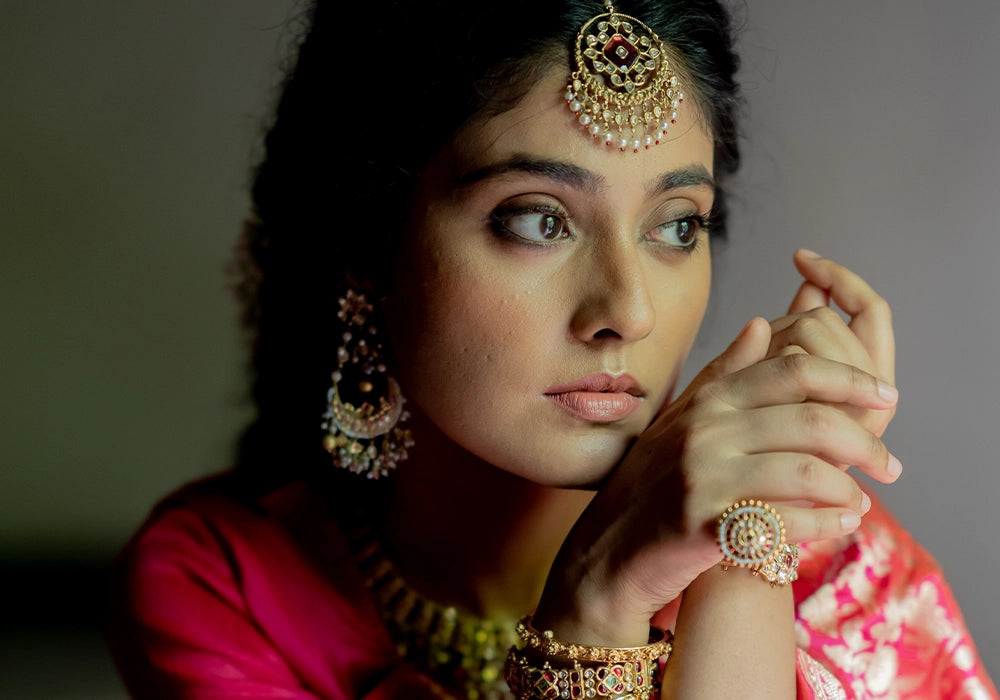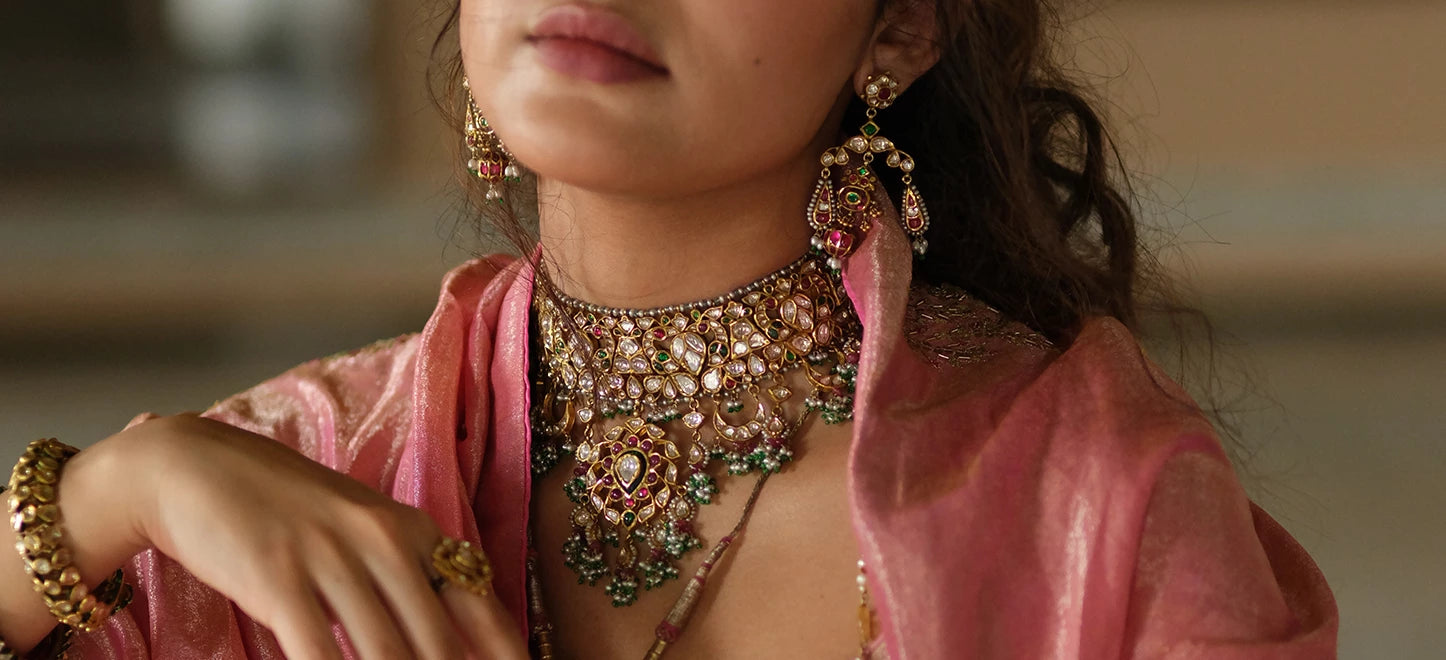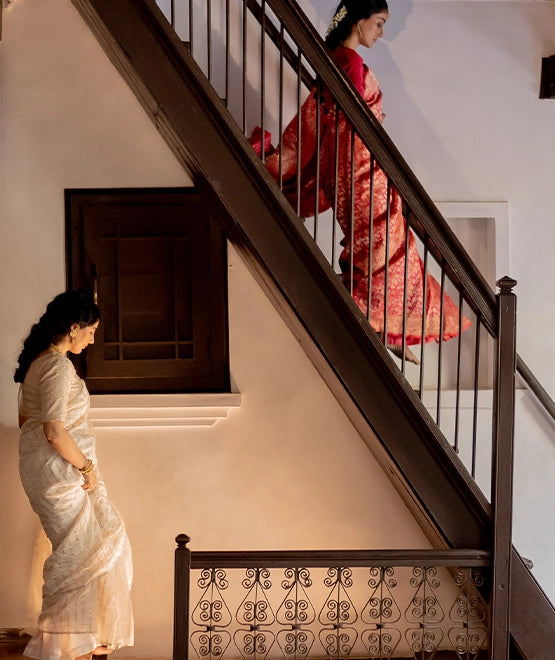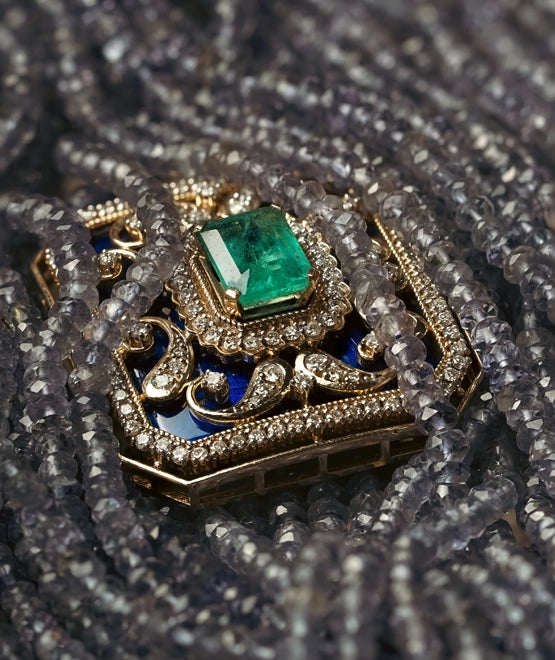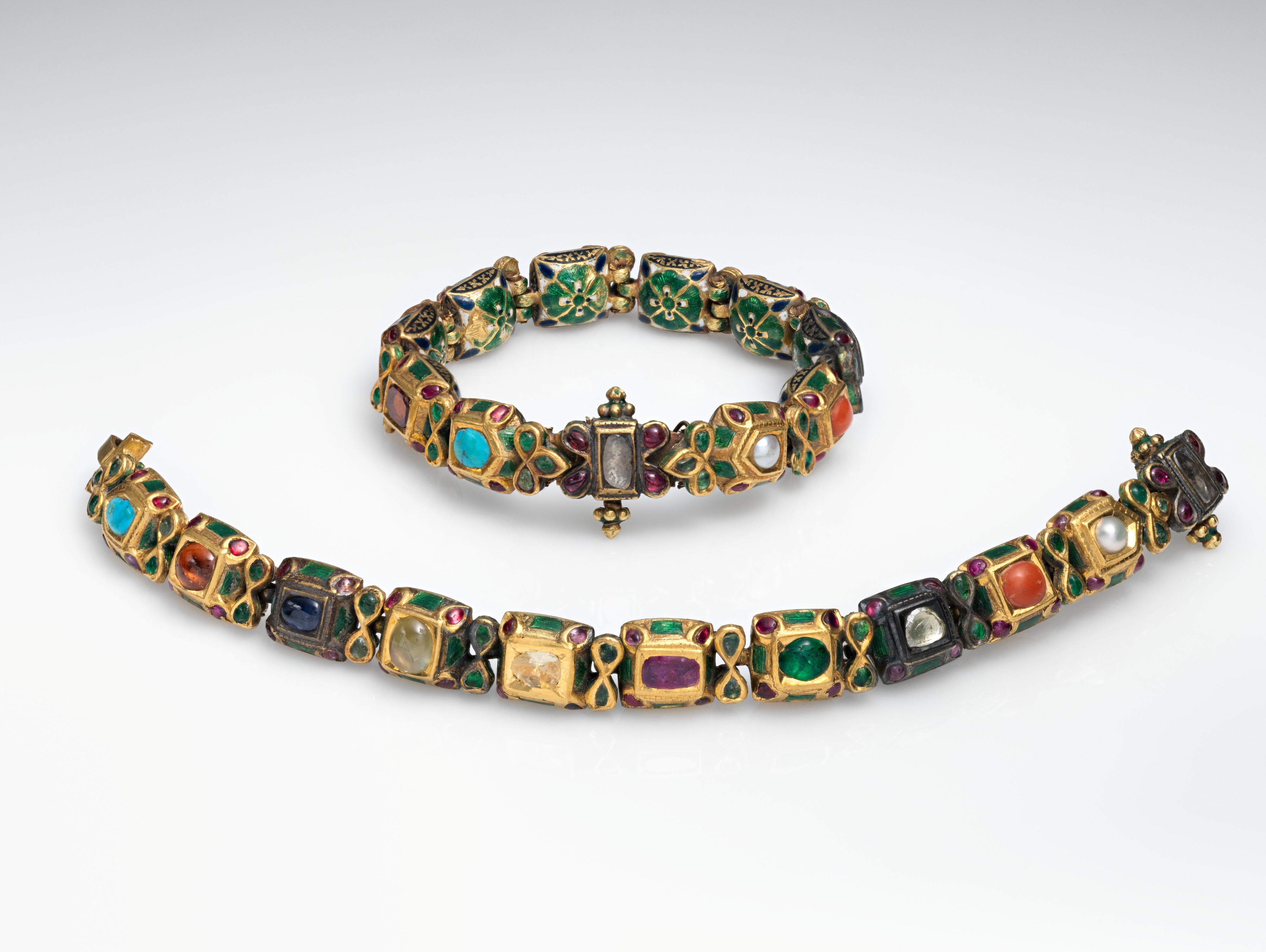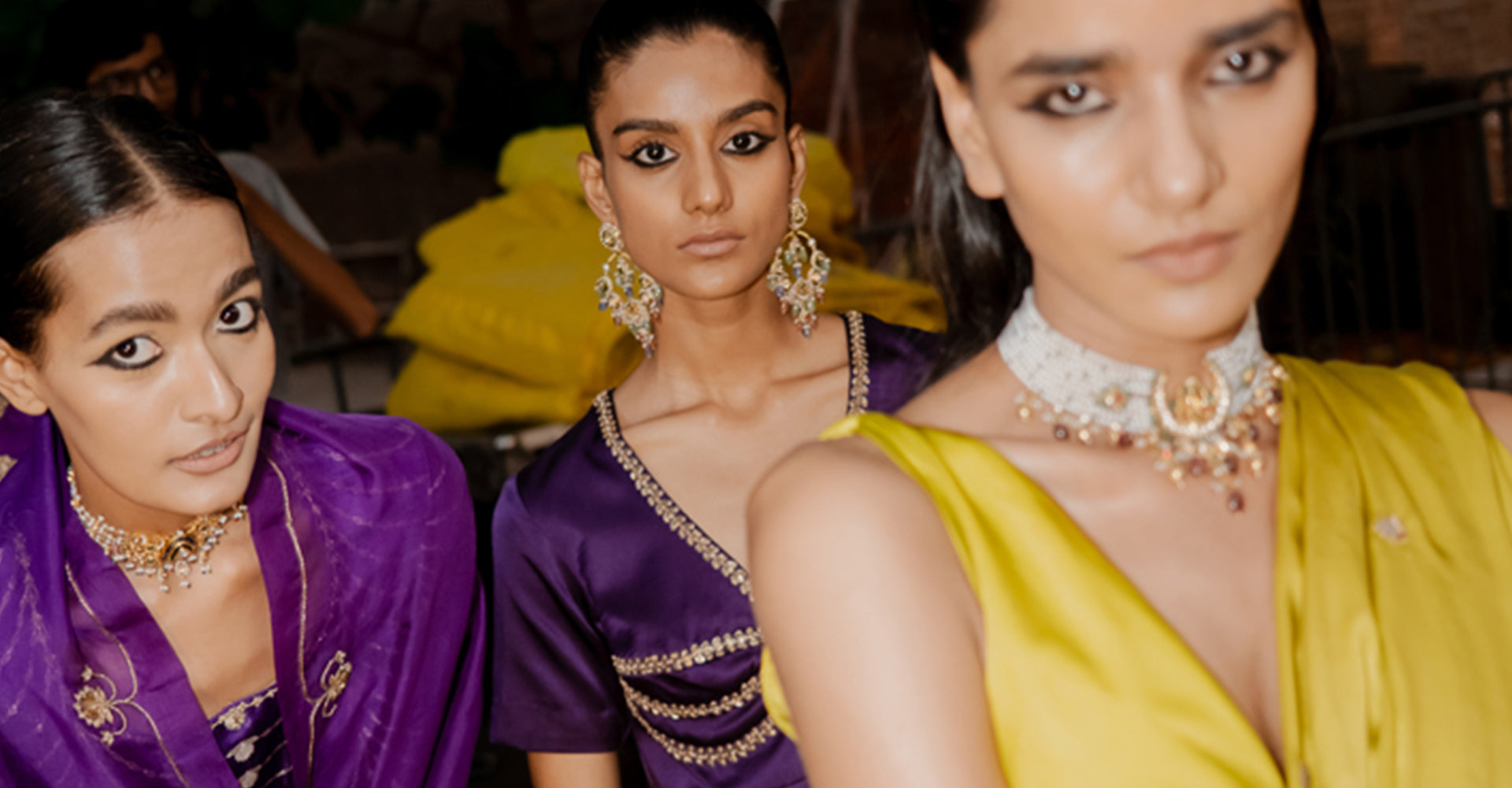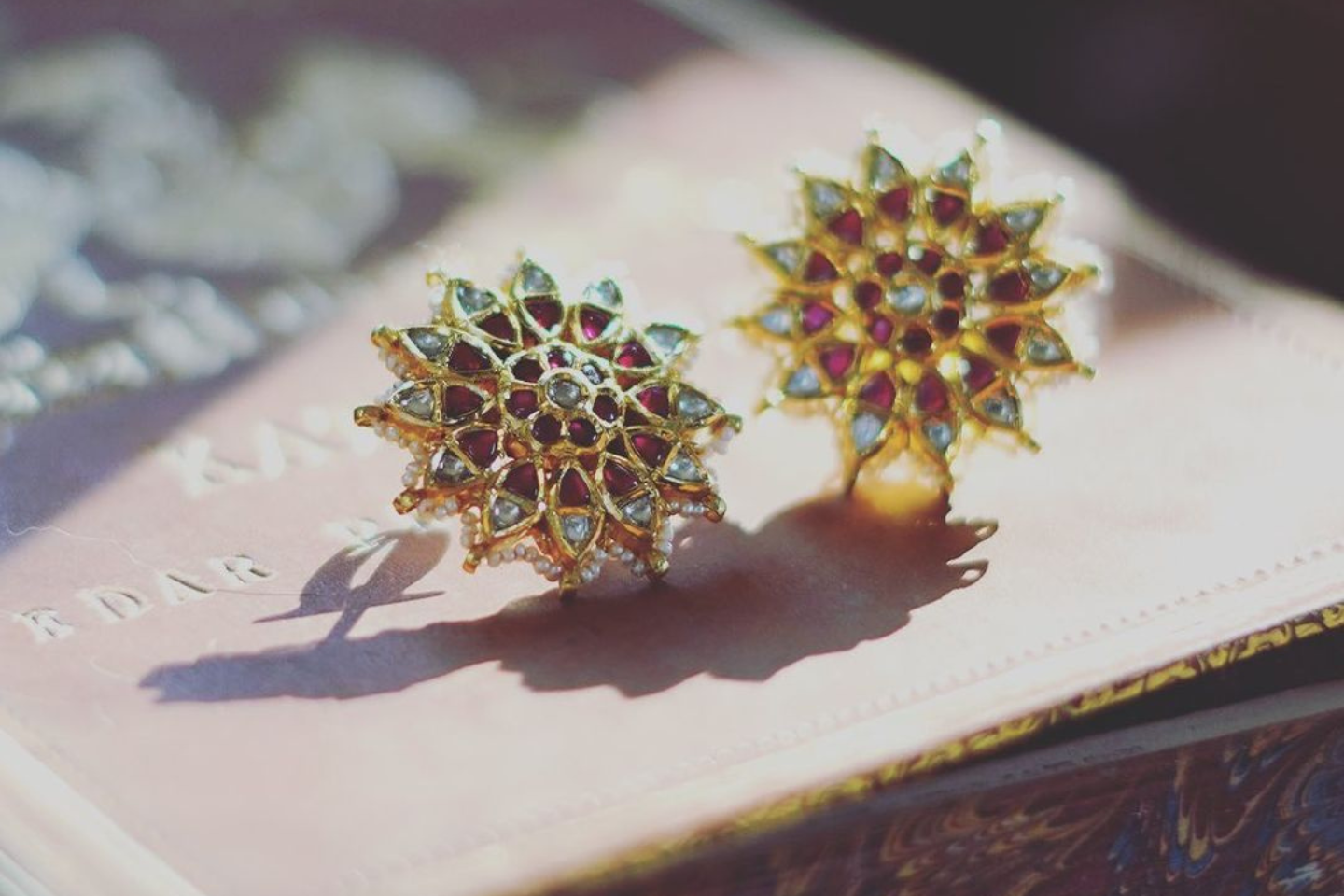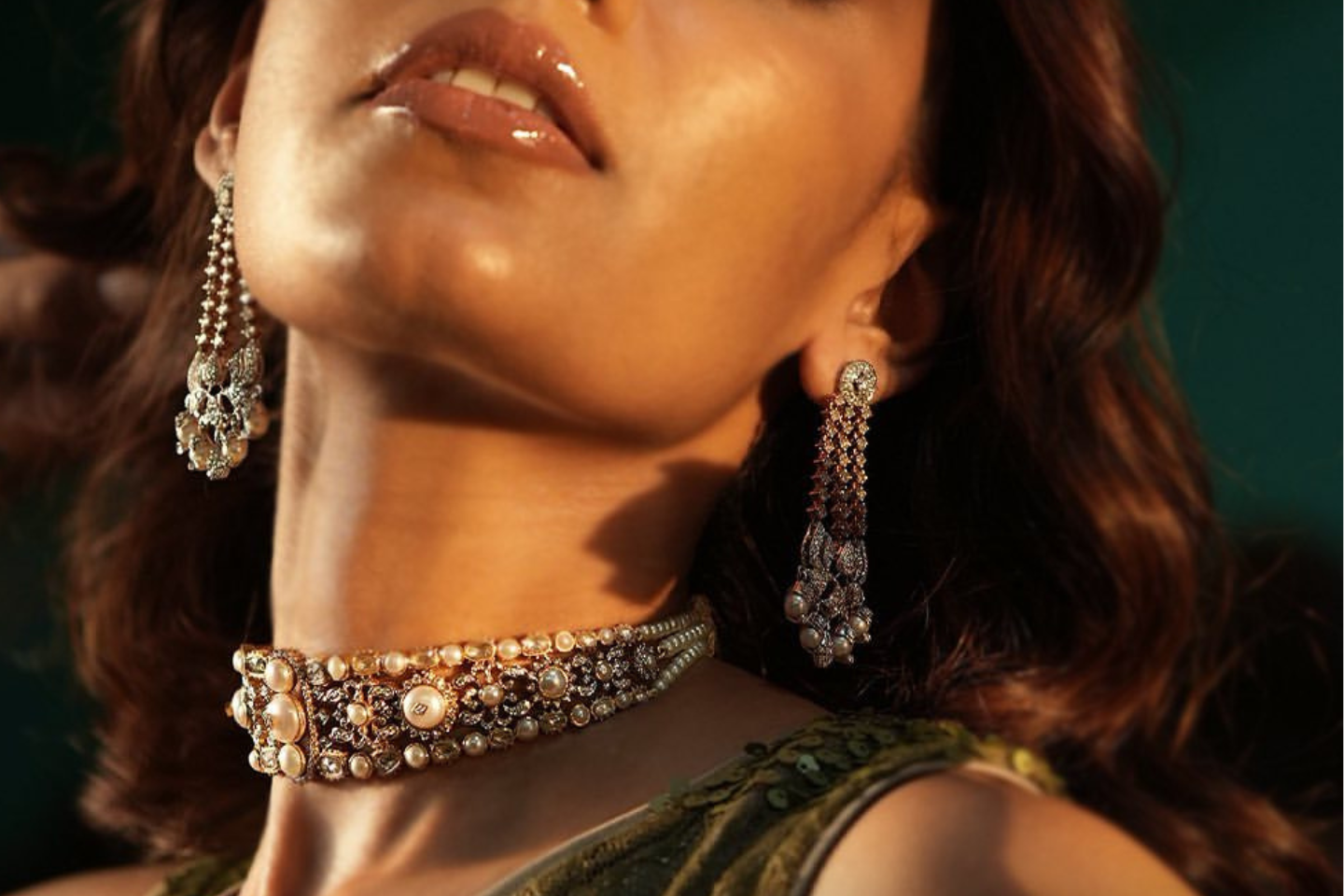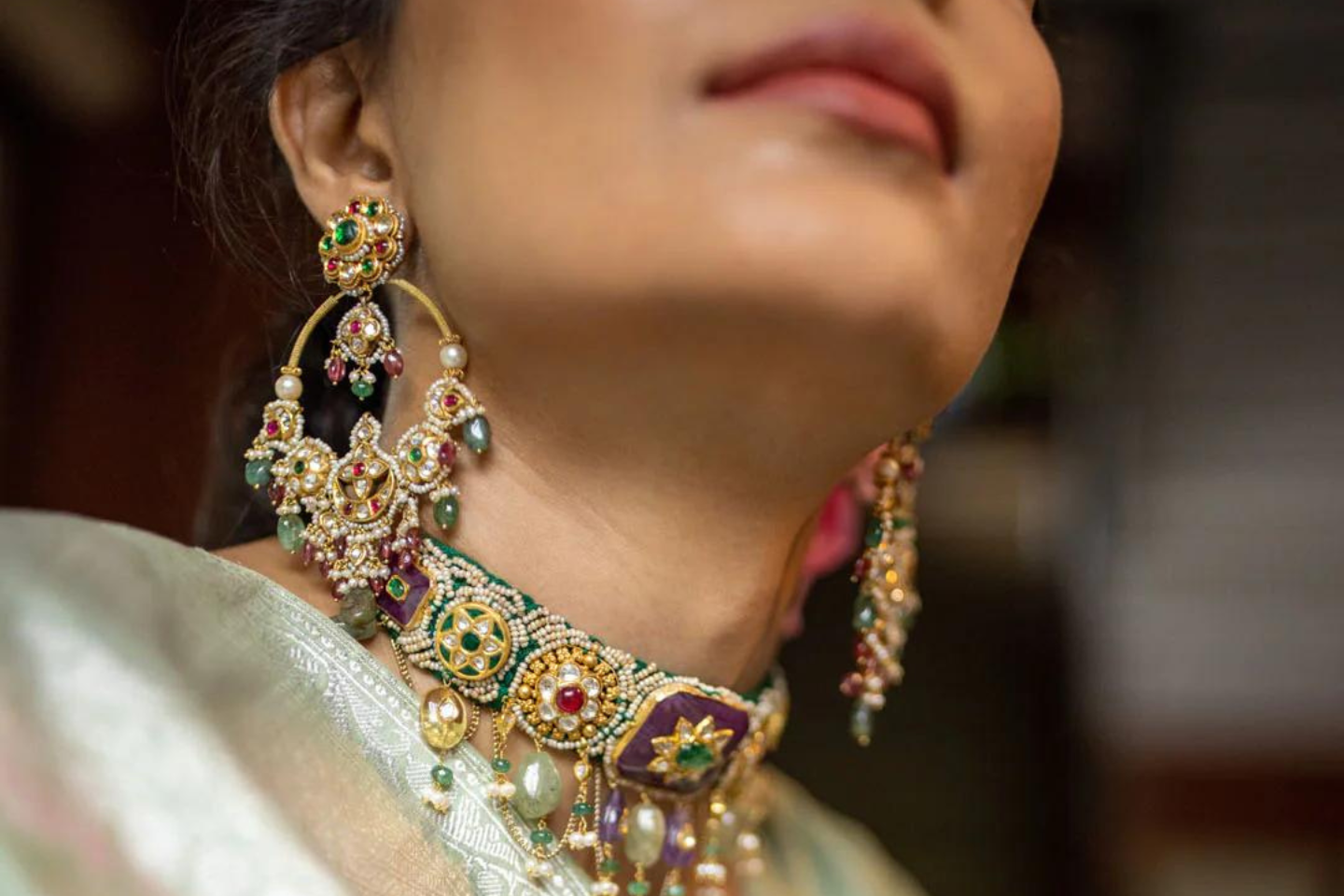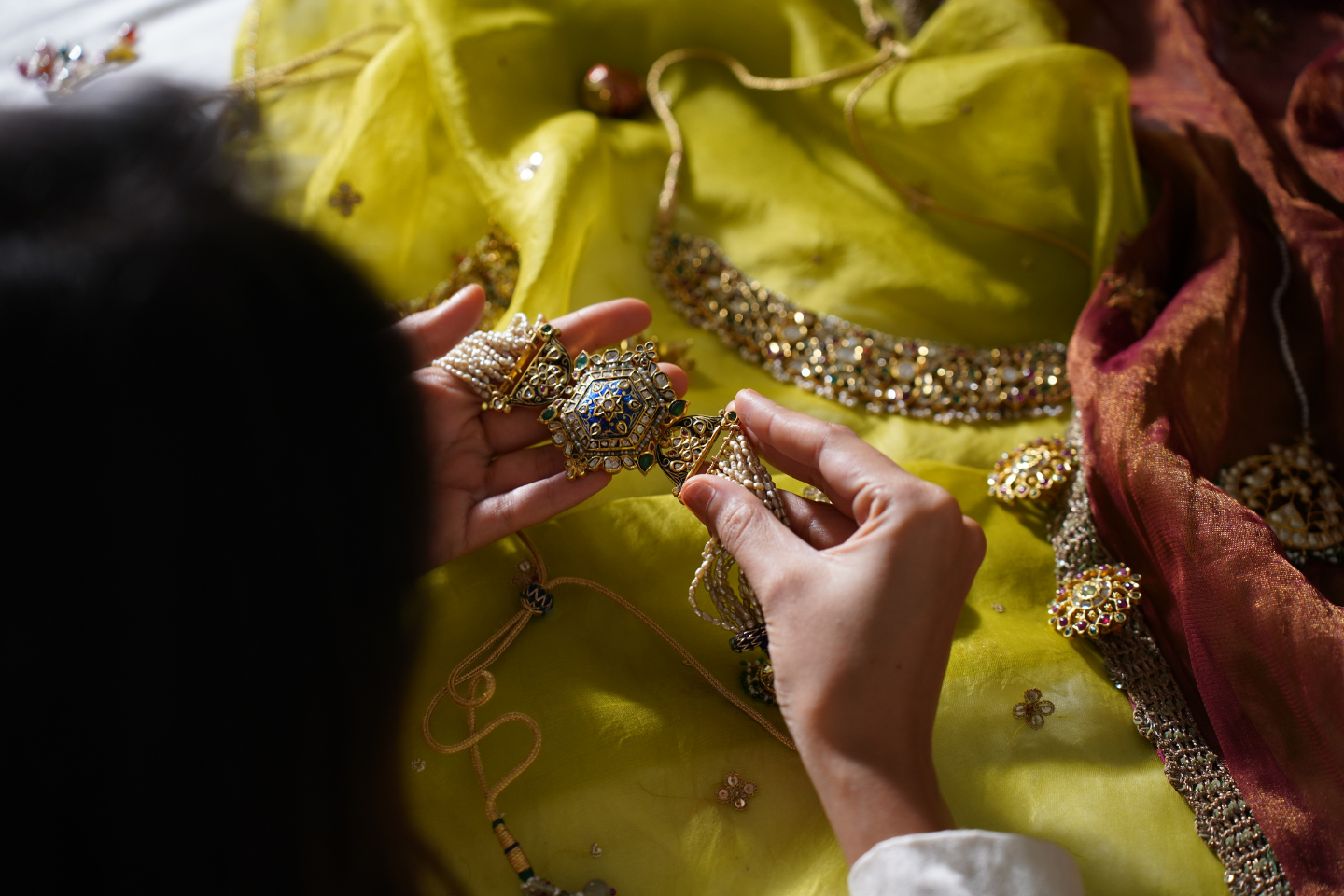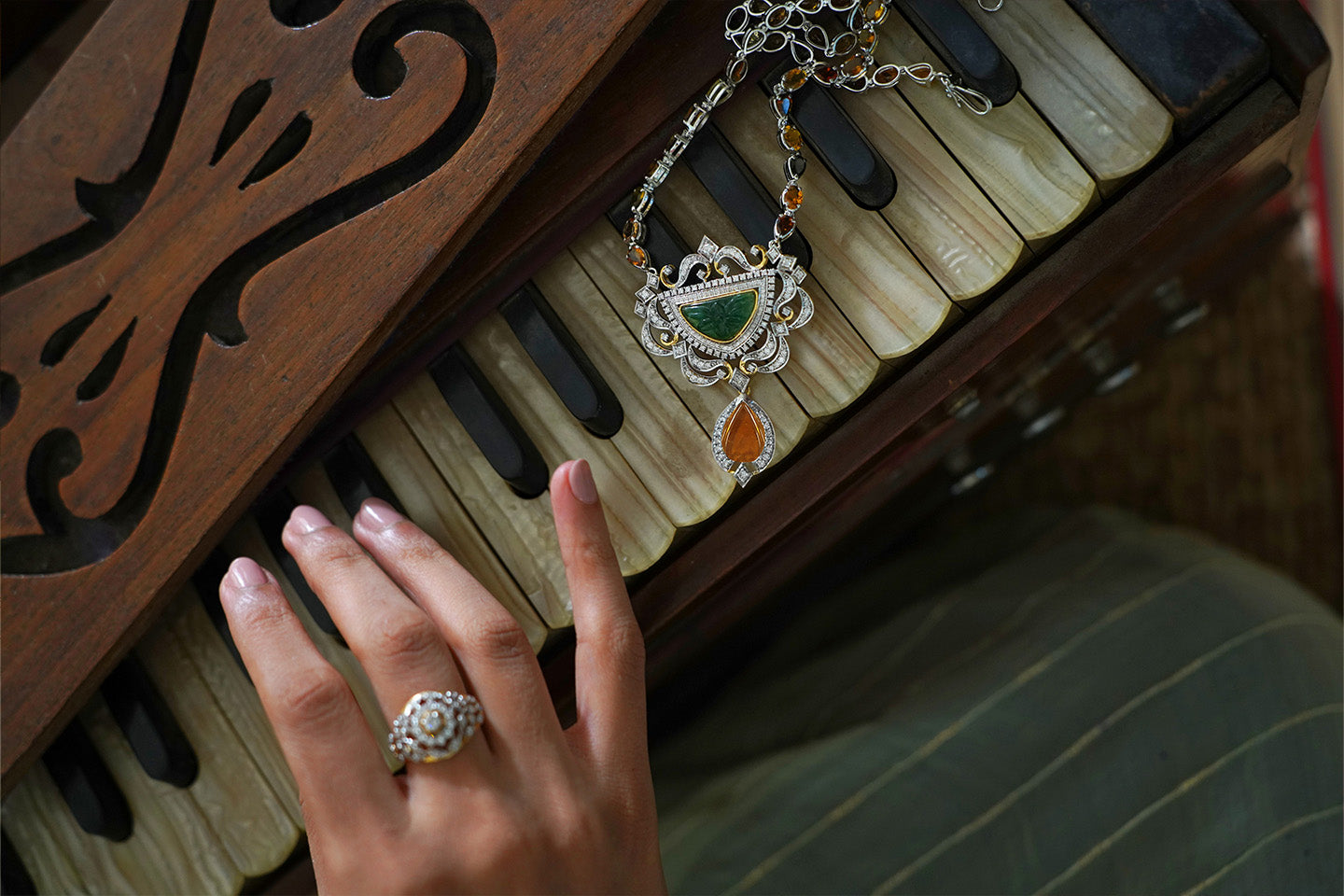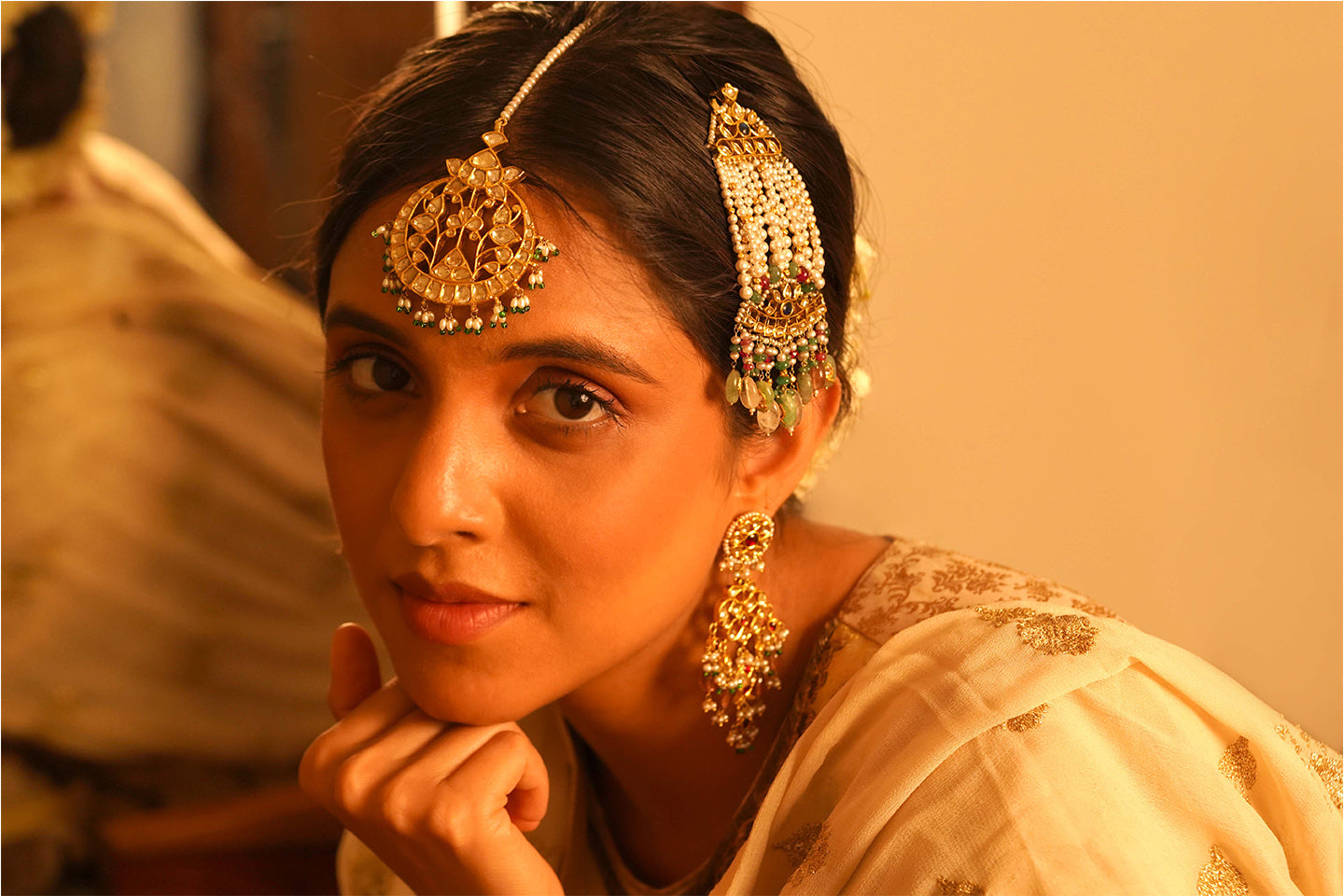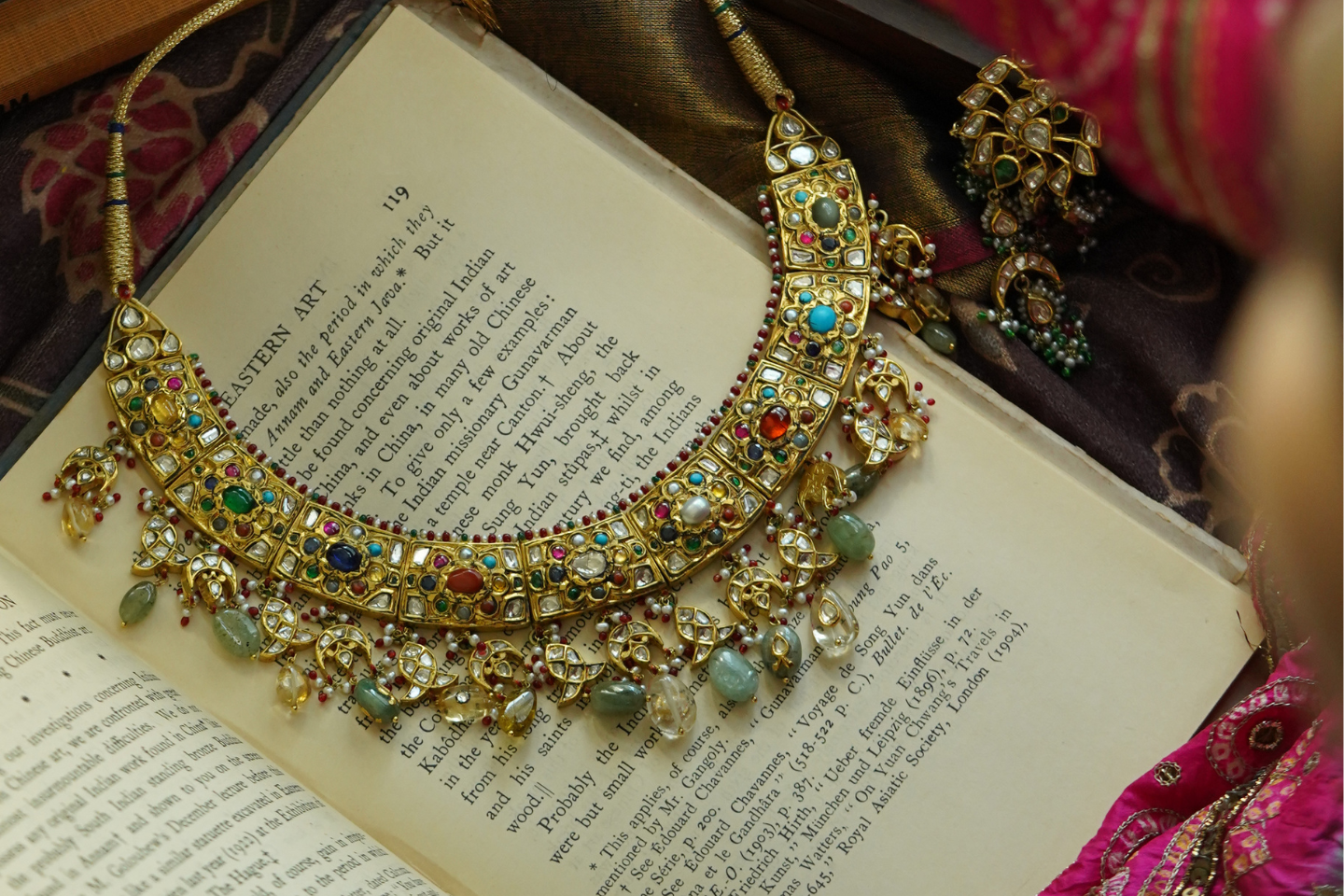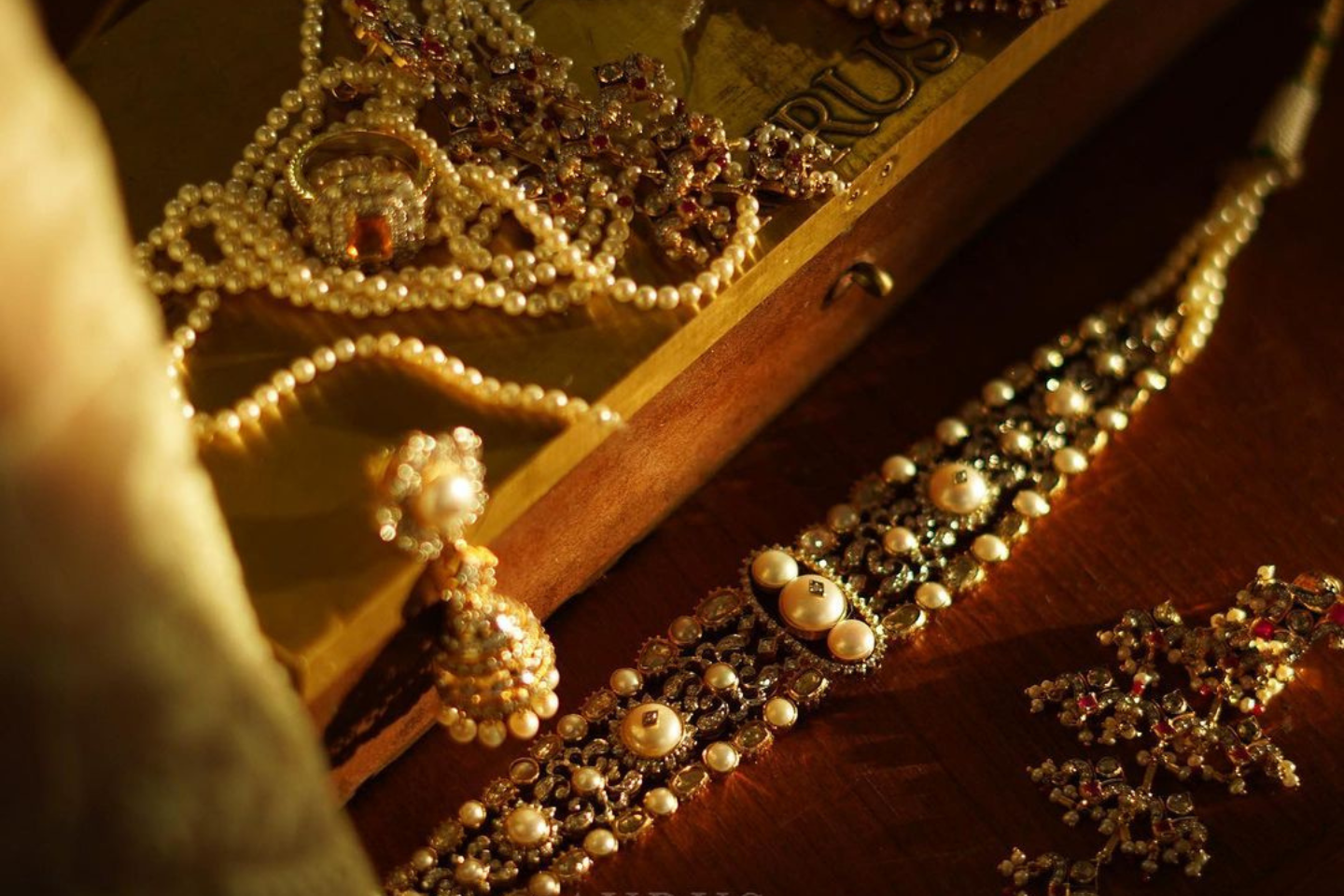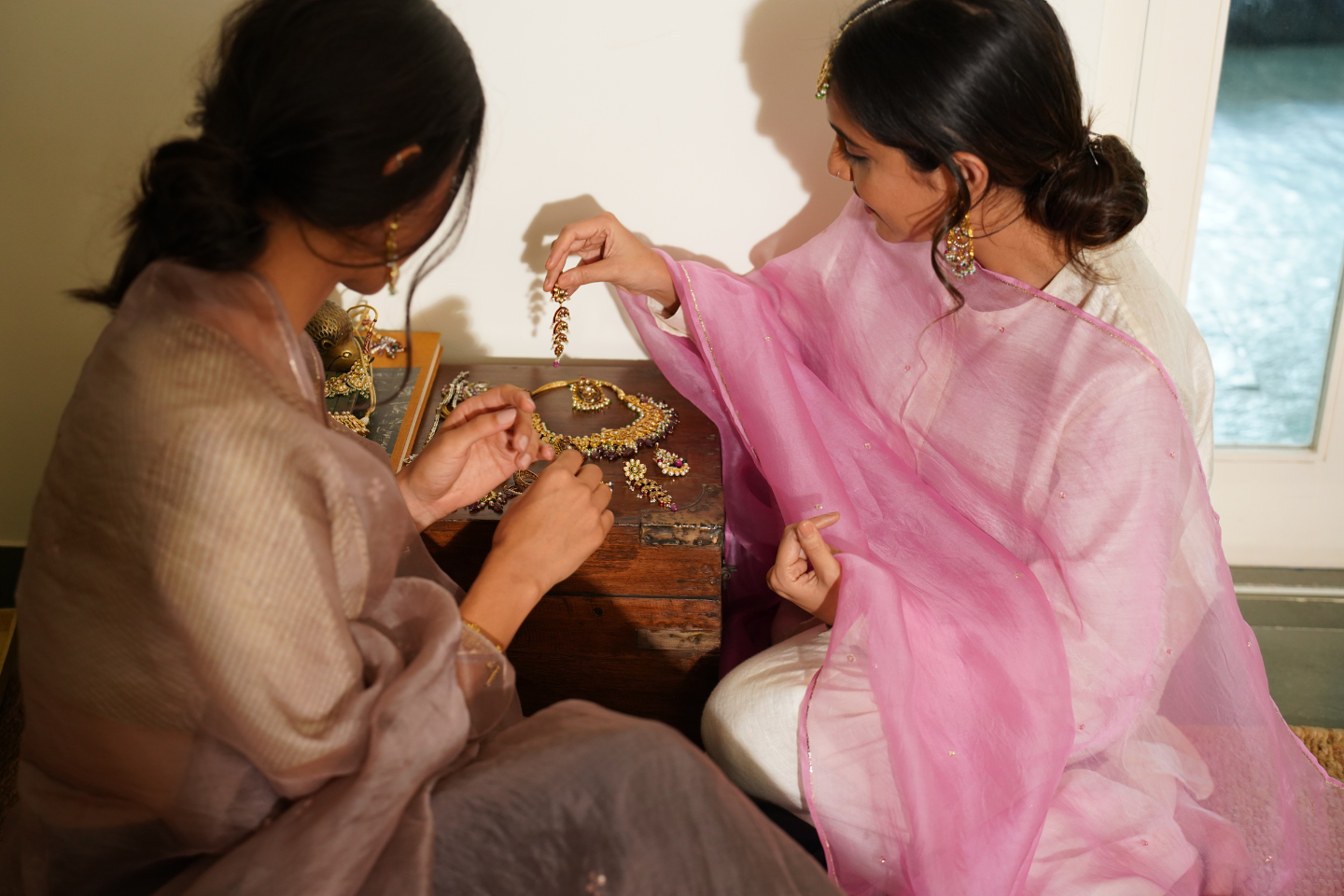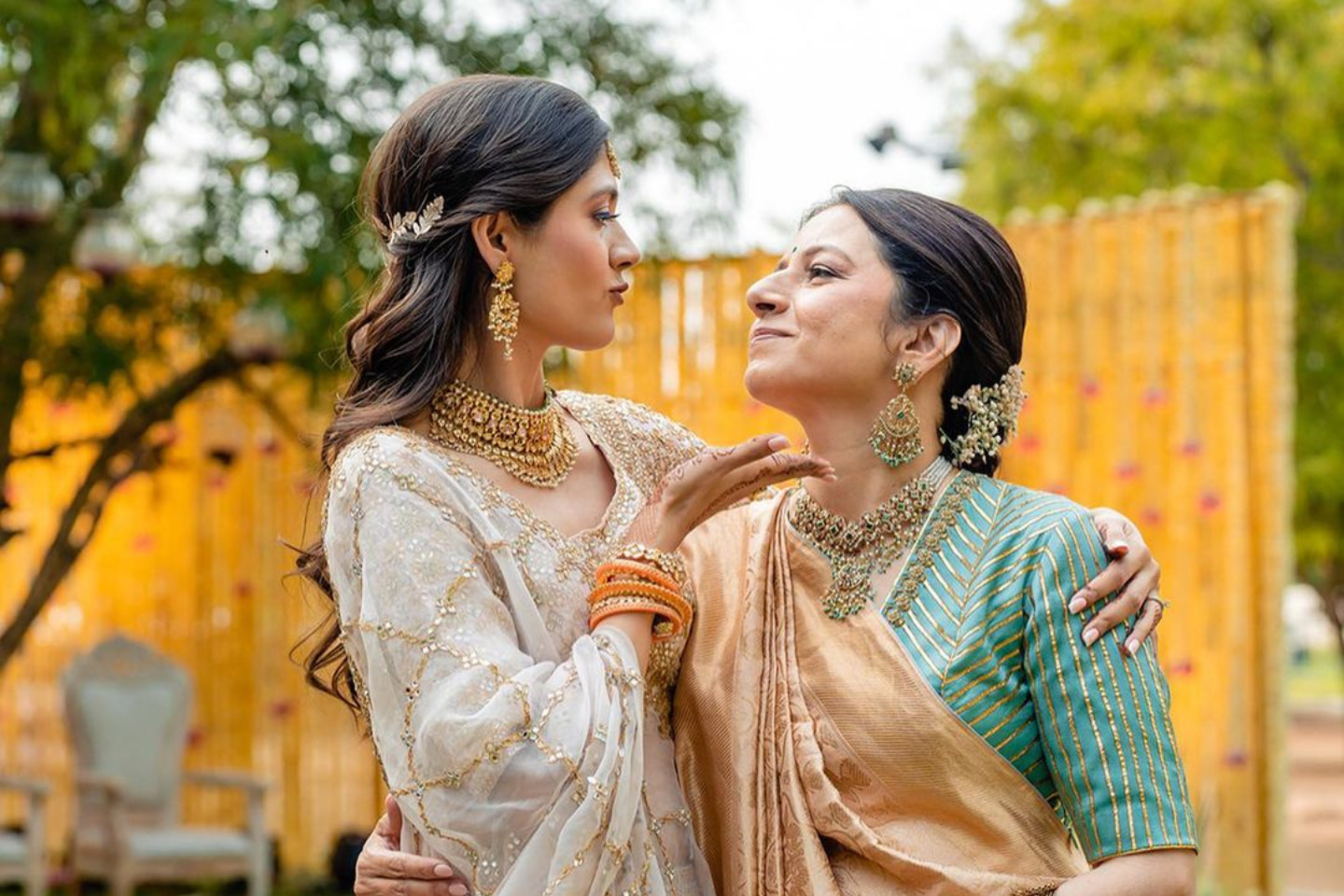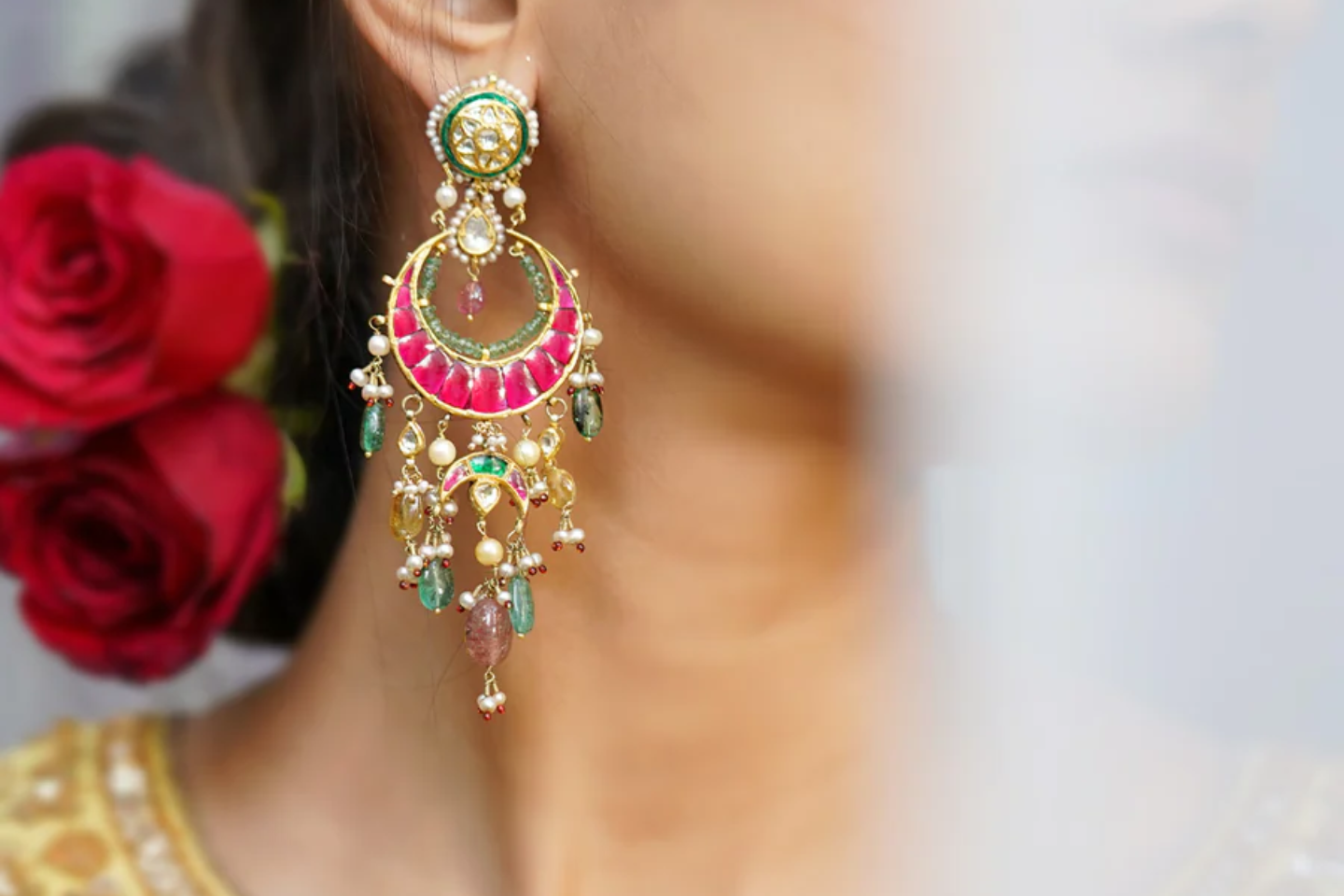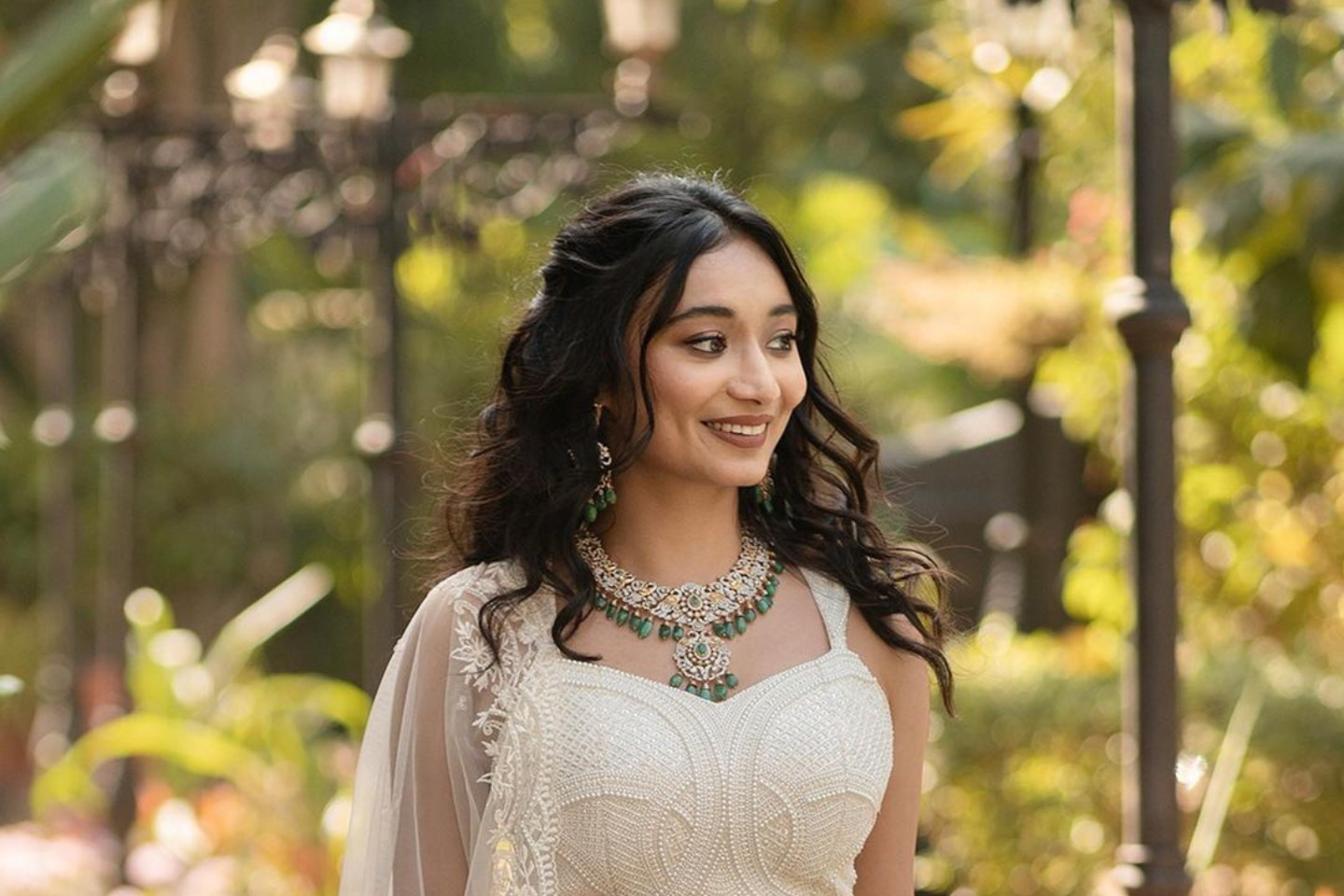In the movie Bajirao Mastani, after Bajirao returns from a triumphant win in a battle against invaders in Bundelkhand, his wife, Kashi Bai, on examining his wounds from the battle hands him a ring of the Navagraha to prevent him from getting any further wounds and protect him from his enemies.
This may be a fragment of fiction, but Navaratna jewelry—jewelry consisting of the nine precious gemstones that are related to the nine celestial deities, the Navagraha—and its value and symbolism are very much real.

Image courtesy: Wikimedia Commons
Navratna jewelry has significant cultural value in many southern and south-eastern Asian civilizations as a symbol of wealth and prestige as well as various supposed talismanic advantages to health and welfare. The concept represents a metaphorical comparison between the macrocosm and the microcosm, or humanity (the universe).
The nine gemstones serve as a symbol for celestial relationships, dividing all of the space in reference to the sun, the source of life, and humanity in relation to the cosmos to create a potent Indian amulet. Thus, the Navaratna is transformed into a representation of the universe and a manifestation of the divine purpose for all living things.
Understanding the navaratna's multi-layered significance requires a peek into the fundamental ideas of Hindu astrology—the relationship between planets and celestial deities; the latter's special functions; the gemstones associated with different deities; and the format and significance of their arrangement in this amulet.
The Nine Jewels of Divine Purpose
In Sanskrit, Ratna refers to a precious stone or object and Nava stands for the mathematical number nine. Navaratna is therefore a compound word meaning "nine precious stones". The earliest mention of the Navaratna goes as far back as the 10th century in Agastimata, an essay on gems and diamonds, with chapters on their history, characteristics, testing, and use in jewelry. All later ancient works (shastras) on the subject of gemstones were based on these nine gemstones.
Because of their relative rarity compared to other gemstones, Navaratna gemstones are regarded as being more valuable than others. As a result, the nine were initially split into two groups: the great stones (Maharatnani) and the lesser stones (Uparatnani). The Maharatnani are fixed whereas the Uparatnani may vary in subsequent works and in common usage. This explains the variations in their use in Navaratna jewelry.

Image courtesy: Wikimedia Commons
The Maharatnani include:
- Diamond (vajra; hiraka; pavi; bhidura)
- Pearl (mukta; muktaphala; jalabindu)
- Ruby (manikya; padmaraga)
- Sapphire (nila; indranila; mahanila)
- Emerald (marakata; tarksya)
The Uparatnani include:
- Topaz (pusparaga)
- Cat’s eye (vaidurya)
- Coral (parvala; vidruma)
- Hyacinth (gomeda); or Zircon (rahuratna)
Navagraha—the Rulers of Our Fate
The Navagraha are the nine celestial deities that make up the Hindu universe. This phrase refers to the idea that the sun, moon, five planets, and two “nodes” (together referred to as nine planets) of Earth, along with their accompanying deities, have the power to capture humanity and determine their fate. These are the Navagraha:
- Sun (Surya, Aditya)
- Moon (Chandra, Soma)
- Mercury (Budha)
- Venus (Shukra)
- Saturn (Shani)
- Mars (Mangal)
- Jupiter (Brahaspati, Guru)
- Ascending Node, or Dragon’s Head (Rahu)
- Descending Node, or Dragon’s Tail (Ketu)

Navagraha, a painting by Raja Ravi Varma
Image courtesy: Wikipedia
The planets Uranus, Neptune, and Pluto are not a part of traditional Hindu astrology or astronomy because they were discovered after the Hindu cosmological system was formed.
How Each Deity Got His Gemstone
Buddha Bhatta's Ratna Pariksha tells us the story of how each Navagraha deity came to be associated with his assigned gemstone. According to this story, a demon with enormous strength named Bala (or Vala) resolved to travel to Heaven with the goal of defeating Indra. Upon knowing about his decision, the gods appealed to him to “become the beast in our sacrifice.” Bala was appeased and decided to accept this great deed. He was sacrificed by the gods, who each took a piece of his body and promptly transformed it into a number of valuable gemstones.
Ruby came from Bala's blood; pearl from his teeth; emerald from his bile; sapphire from his eyes; coral from his flesh; topaz from his skin; chrysoberyl from his marrow; cat's eye from his fingernails; rock crystal from his fat; and so on.
The specific gemstone that the deity was holding came to be identified with him. As a result, the stones came to be known as “the preferences of the planets.” The group of gemstones linked with the gods became known as the Navaratna, or “nine gemstones,” because they were nine in number.

Image courtesy: Sampat Jewellers
Each celestial deity is said to command a specific direction. Consequently, so does the stone that represents them. When the situation calls for the deity's presence and protection, the stone takes on the role of a center into which the deity can descend. The Navagraha will never hurt the owner of the Navaratna jewelry if they are honest and have strong moral character. Instead, together they will provide protection against the invasion of evil from all sides.
The gemstones themselves are thought to store cosmic rays, which they perpetually release. Each gemstone's energy reserve is continually replenished by emission from the planet it belongs to, much like a battery. Together, they are supposed to work as a powerful defense and healing amulet by acting as a path for the flow of the energy of their planets and exerting their influence on the wearer, giving them great magical ability.
